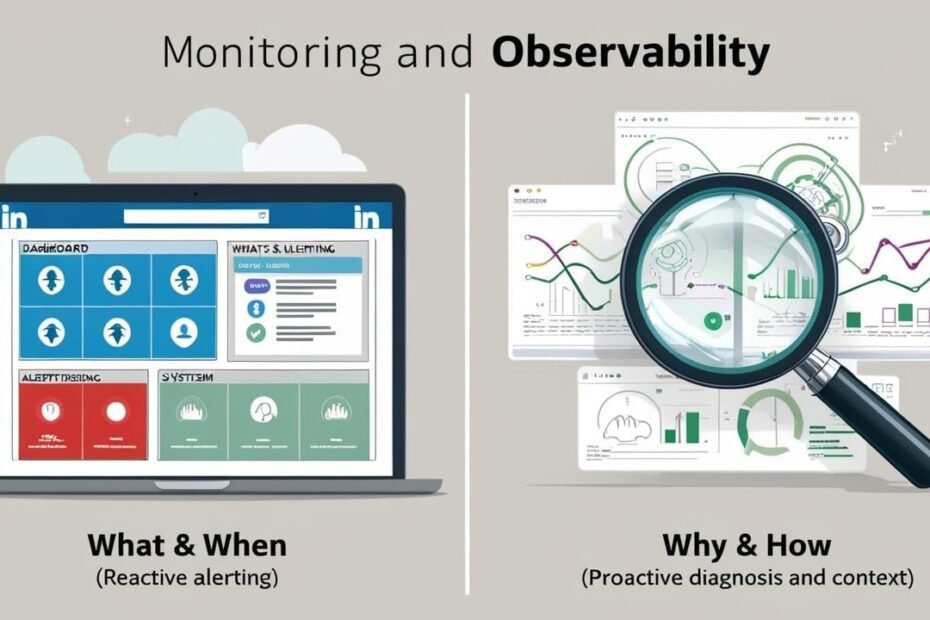In today’s hyper-connected, rapidly evolving technology landscape, senior management must understand the crucial difference between Monitoring and Observability — because this distinction directly impacts business resilience, customer satisfaction, and operational costs.
Monitoring: The Traditional Safety Net
Monitoring is about tracking known metrics and alerting teams when something goes wrong — like a smoke alarm that sounds when there’s a fire. It’s essential for maintaining system health and reacting to outages or performance dips. However, monitoring is inherently reactive and limited to predefined signals. It tells you what broke, but not why or how to fix it quickly.
Observability: The Competitive Advantage
Observability takes this a step further by providing a 360-degree, contextualized view of your entire system — correlating metrics, logs, traces, and events in real time. It enables teams to understand why an issue occurred, where it originated, and how it affects other components, empowering proactive problem-solving and continuous optimization.
Why Should Senior Leaders Care?
Because downtime, slow performance, and unresolved incidents cost money — in lost revenue, damaged brand reputation, and decreased customer loyalty. Observability reduces Mean Time to Resolution (MTTR), prevents outages before they impact users, and drives smarter investment decisions by revealing inefficiencies and bottlenecks.
Real-World Example for Senior Management:
Imagine your company runs a critical e-commerce platform. During a major sales event, your monitoring system alerts that the checkout page is slow. Your operations team scrambles to identify the problem, but without observability, they only see the symptom — slow checkout — not the root cause.
With an observability platform, the same team can immediately trace the slowdown to a recent microservice update interacting poorly with the payment gateway. They can see the cascading impact across the system, prioritize fixes, and even roll back changes — all before customers abandon their carts.
The result? Minimized revenue loss, preserved customer trust, and a smoother sales event.
The Bottom Line for Business Leaders:
- Monitoring is necessary but not sufficient for today’s complex, dynamic systems.
- Observability transforms IT from a reactive cost center into a proactive business enabler.
- Investing in observability means fewer outages, faster innovation cycles, and ultimately, better customer experiences that drive growth.
If your organization is still relying solely on monitoring, it’s time to evolve your strategy. Observability isn’t just a technical upgrade — it’s a strategic business decision.

Citations:
- https://uptimerobot.com/knowledge-hub/monitoring/observability-vs-monitoring/
- https://www.dynatrace.com/news/blog/observability-vs-monitoring/
- https://www.ibm.com/think/topics/observability-vs-monitoring
- https://leaddev.com/reporting/what-business-case-observability
- https://www.linkedin.com/pulse/observability-vs-monitoring-difference-why-you-need-both-resilient-m4g6c
- https://www.simform.com/blog/observability-vs-monitoring/
- https://newrelic.com/blog/best-practices/what-is-observability
- https://www.bmc.com/blogs/observability-vs-monitoring/
